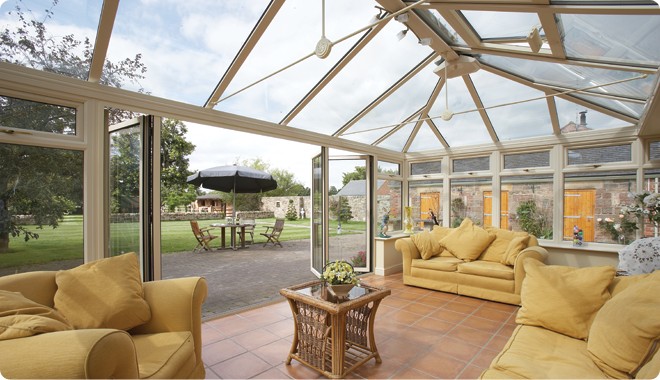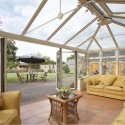One of the most persistent questions for homeowners is that of the value of their property. You’d like for it to go up and you certainly don’t want it to go down. The ups and downs of the housing market can naturally leave you feeling flustered. There are many ways to add to the intrinsic value of your home, muffling potential market fluctuations in the process. Putting extra work into your home is one of the best ways you can take matters into your own hands, by increasing the value of your home over the long-term. Add to that the rise in popularity of DIY projects, and you have a way to increase the value of your home while having fun doing so.

Why Conservatories?
It’s no secret that the UK has had a long lasting love affair with glorious greenery. From the English fields, to the Scottish moors, to the Northern Irish countryside and back again, the UK is full of vast stretches of green. This makes a greenhouse or conservatory a natural choice for homeowners looking to not only increase the value of their property, but to do so by capitalising on the UK’s natural beauty. Two of the choicest options at the moment when it comes to DIY, with an eye towards home improvement and property value, are built structures and corresponding plants. Everything from barbeque pits to storage sheds are built structures that increase your home’s value, while lush plants and shrubbery can give your home a livelier, more natural look. Conservatories in Oxford and elsewhere are thus a great way to join the two options at once, giving your home an impressive new structure that adds to the overall value of the property, while simultaneously adding a touch of green to your land as well.
Conservatory Styles
Once you’ve decided to make a conservatory your next DIY project, your next step is to determine what kind of conservatory you’d like. There are many different kinds of conservatories, all of them are classy and each has their own sense of style.
For example, a Victorian conservatory can call to mind the rolling green fields and sense of pastoral life that can be found in the works of George Eliot and Thomas Hardy, for example. With their pitched roof featuring three to five facets, as well as a general curvature, they remain the ideal representation of elegance and order. Gable and Edwardian conservatories likewise offer a sophisticated choice, though these options offer roofs that are a bit more angular and sharp in appearance. Orangeries, on the other hand, tend to have a touch of the exotic about them and, as the name would suggest, were originally designed with the intent of growing fruits such as oranges.
On top of all that, you’ll want to think about your options when it comes to glazing, roofing, and the materials to be used during construction. Many of the best conservatories today use double-glazing, while Hardwood, UPVC, and Aluminium rank among the most favoured building materials. Roofing options will vary depending on the type of roof and the overall design aesthetic that you choose.
All this and more can help you choose the best conservatory for your home.

